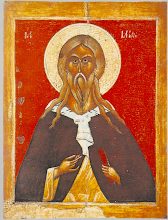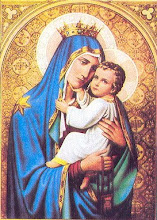According to the biblical chronology established by St. Bede the Venerable (who was made a Doctor of the Church by Pope Leo XIII in 1899), we can determine that this period of the unbinding of Satan occurred at the end of the Sabbath Millennium discussed by the Early Church Fathers - which consisted of a prophetic week of millennia beginning from the biblical date of Creation. So Pope Leo XIII's vision of the convergence of a host of demons upon the Eternal City of Rome directly parallels the armies of Satan surrounding the camp of the saints at the end of the thousand years described in Rev 20:
When the thousand years are ended, Satan will be released from his prison and will come out to deceive the nations at the four corners of the earth, Gog and Magog, in order to gather them for battle; they are as numerous as the sands of the sea. (Rev 20:7-8)
(For a more in-depth analysis, see the recent posts The Sign of Jonah and the Binding of Satan, Pope Leo XIII and the Unbinding of Satan, and Our Lady of Knock and the Opening of the Sealed Book.)
We have already noted how the 2017 solar eclipse occurs 40 days before the Jewish feast of Yom Kippur (the Day of Atonement), on 29th/30th September, 2017. According to Jewish tradition, the month of Elul marks a 40-day period of repentance before the feast of Yom Kippur, and was the time during which Moses spent 40 days on Mount Sinai after the incident of the Golden Calf, in order to prepare for the reception of the second set of tablets containing the Decalogue.
Given the fact that the date of Yom Kippur this year falls on the feast of St. Michael and the Archangels (Michaelmas), there is yet another disparate period of 40 days of repentance coming into play around the time of the solar eclipse, this time rooted in a long-standing Catholic tradition. Although it is not widely celebrated today, there is a custom in Catholicism dating back to the Middle Ages known as St. Michael's Lent, which was a 40-day period of fasting in preparation for the feast of Michaelmas, lasting from the Solemnity of the Assumption on 15th August to Michaelmas on 29th September. We should note that while the period of St. Michael's Lent actually extends to 45 days, it is still held to be a symbolic 40-day fast in keeping with Lent itself. If we are to count 40 days back from Yom Kippur/Michaelmas on 29th-30th September this year, we arrive at the date of the solar eclipse itself on the Feast of Our Lady of Knock, 21st August, 2017, rather than the Solemnity of the Assumption.
While the practice of St. Michael's Lent has largely fallen out of use today (being kept only by a few Franciscan groups), it was vastly more popular in medieval times. The most famous adherent of St. Michael's Lent was St. Francis of Assisi, who practised this custom annually. Indeed, St. Francis received his stigmata while he was on spiritual retreat to observe St. Michael's Lent on Mount La Verna (Alverna) with three of his Franciscan brothers. The Stigmatization of St. Francis occurred when he received a vision of a crucified seraph, and although the exact date was not stipulated by his earliest chroniclers, it was said to have taken place around the Feast of the Exaltation of the Cross on 14th September, 1224, just two years before his death. The Stigmatization of St. Francis was commemorated in a feast day of its own on 17th September, before being removed from the General Calendar in 1969. However, as we shall see, there is good reason to believe that St. Francis actually received the stigmata on the 15th of September - the feast of Our Lady of Sorrows (which commemorates when the Blessed Virgin partook of the suffering of her Son). (Read more.)
Christmas Charities of Marie-Antoinette
36 minutes ago




















No comments:
Post a Comment